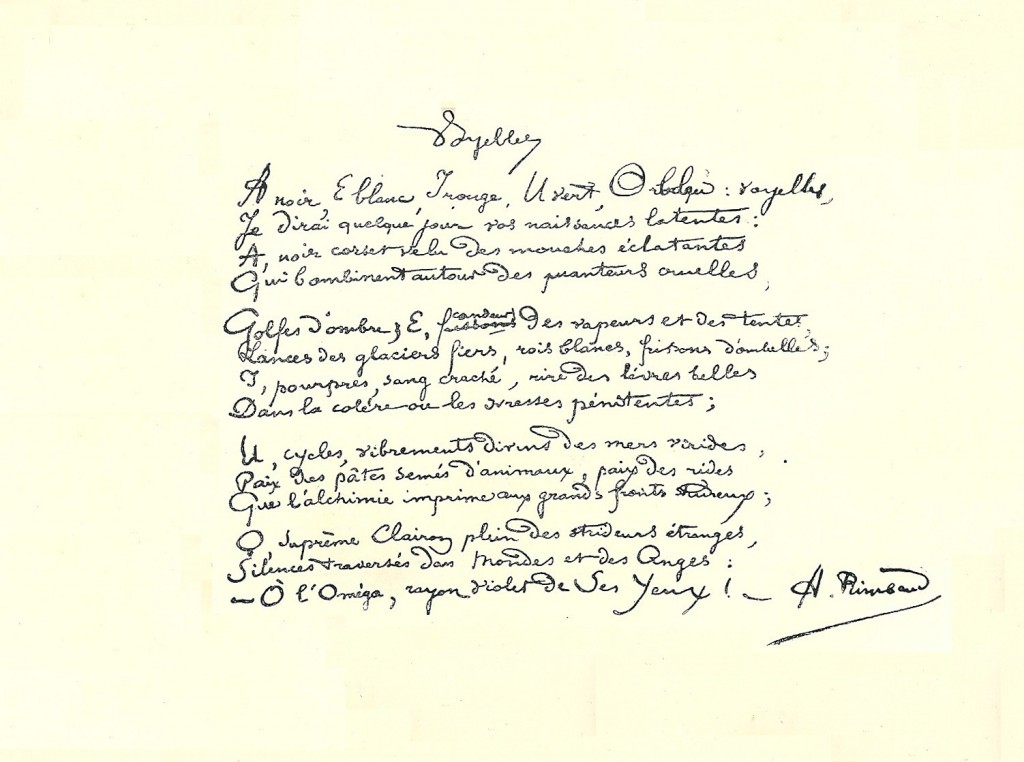A seer’s vowels
03.07.2016Going with the flow, senses are thematically in tune with each other. Synaesthesia links and diffracts sound, colour, smell, touch and taste depending on one’s sensorial gifts. memento will soon be checking out the cradle of the synaesthete dubbed by fairies. But right at the beginning there were the poets.
When it comes to the sensory alliance that characterises synaesthesia, we invariably kick off with Correspondances by Charles Baudelaire in Les Fleurs du Mal (1857, then 1861), a poem to which we always return. It is in this sublime sonnet that we find the classic line: « Scents, colours and sounds correspond. »
A few years later on the 15th May 1871 Arthur Rimbaud wrote a letter to Paul Demeny. This letter belongs to posterity. He was by then a poet. The mission he assigned to this illustrious figure is sensibly senseless: « I say that one must be a seer, make oneself a seer. The poet becomes a seer by a long, prodigious and rational disordering of all the senses. This language will be of the soul for the soul containing everything, smells, sounds, colours, thought holding on to thought and pulling. » He goes on to render homage to the master: «But since inspecting the invisible and hearing the unheard of is different from recovering the spirit of dead things, Baudelaire is the first seer, the king of poets, a real God. »
The very same year, or maybe the next, Rimbaud wrote the sonnet entitled Vowels. His first line: «A black, E white, I red, U green, O blue: vowels, » is a typical synaesthetic association that he supplements with images, tension, sensations, diversions, sound and smell.
In all likelihood Baudelaire and Rimbaud were not synaesthetes. But their genius compensated for this deficiency of divine hallucinations.


